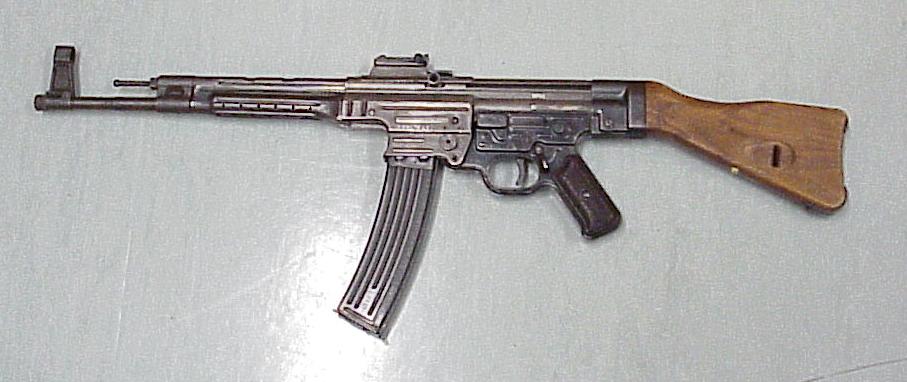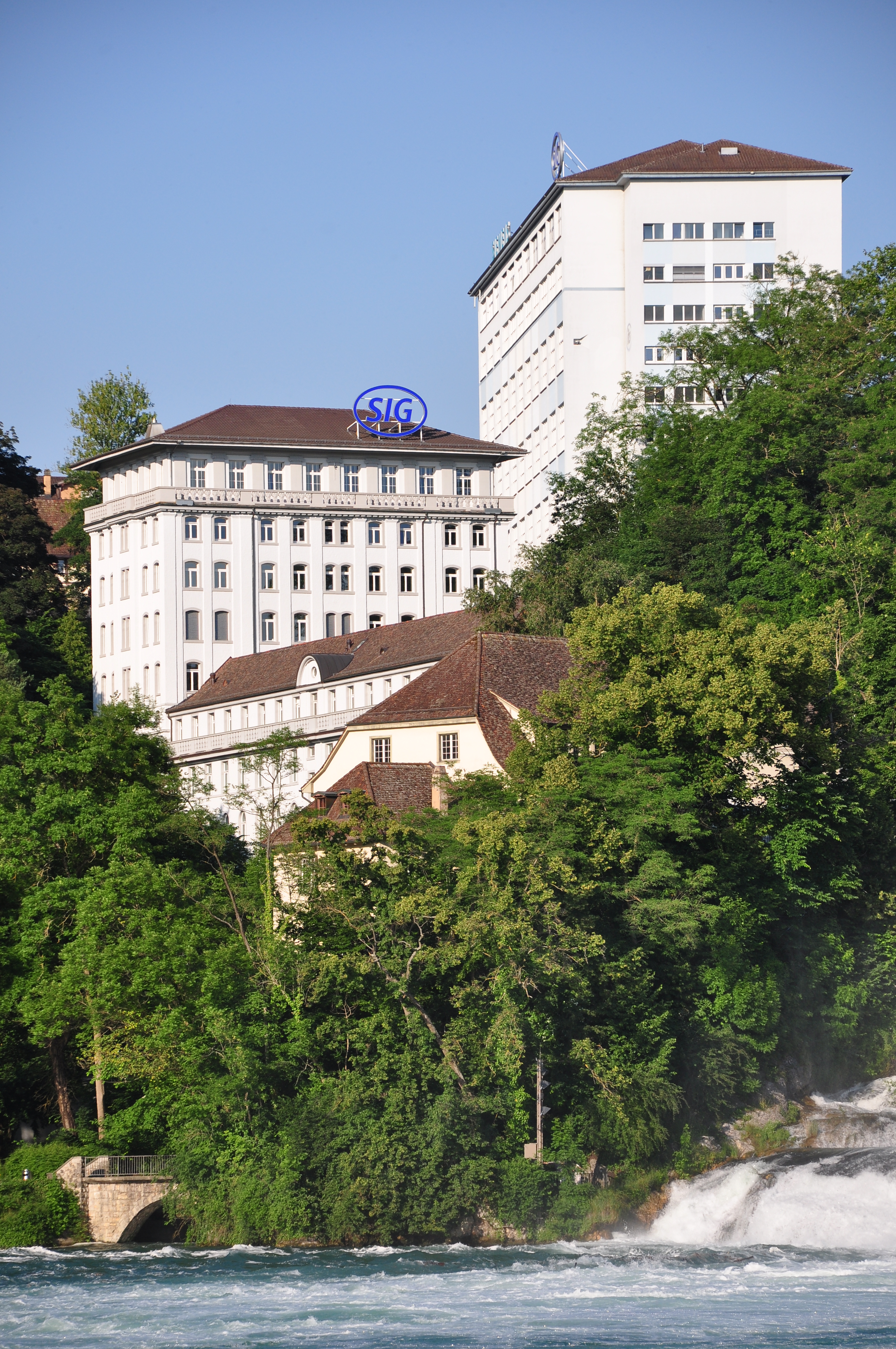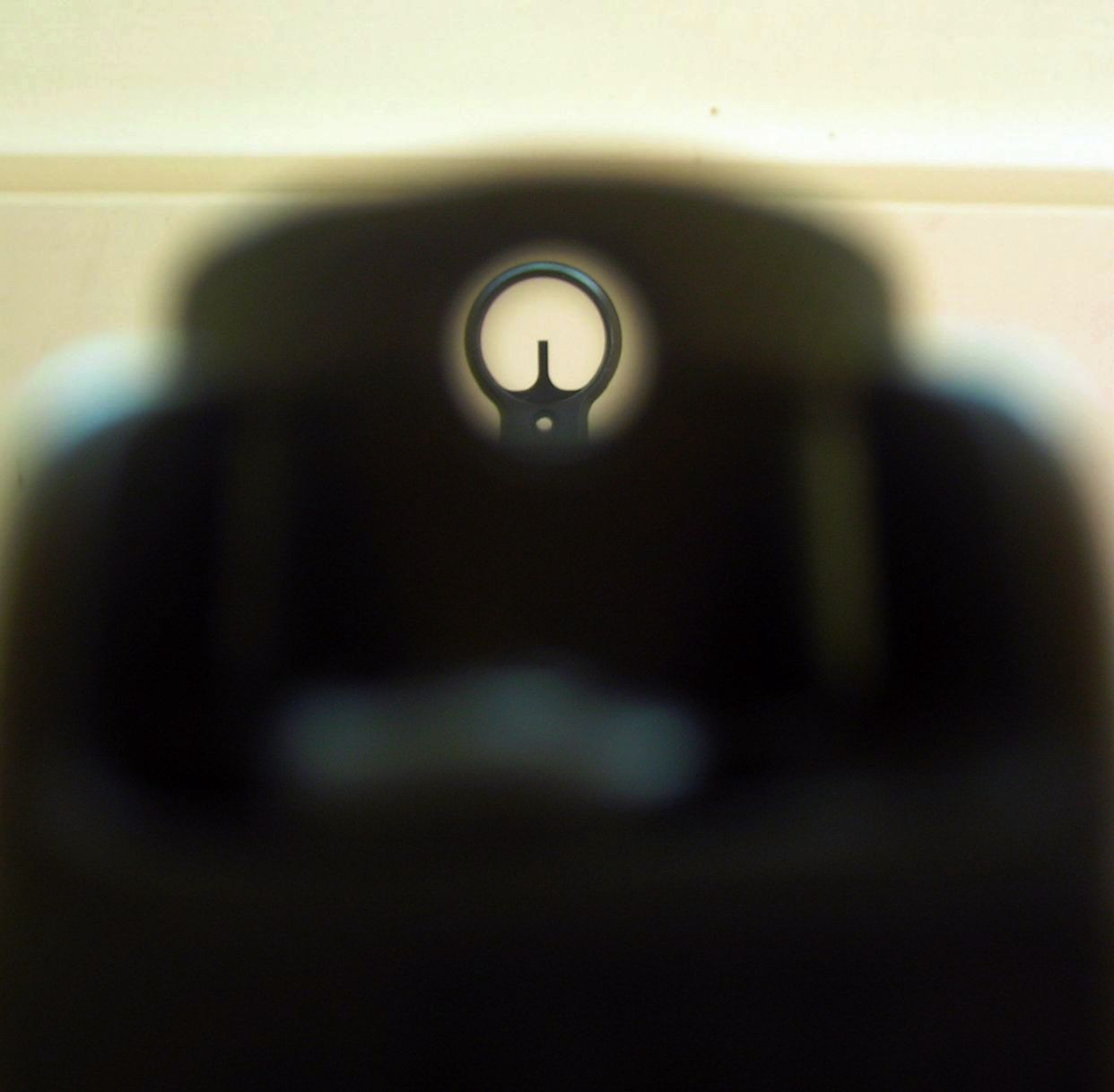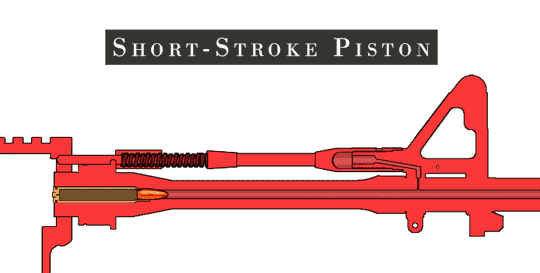|
SIG SG 530
The SIG SG 530 was a Swiss assault rifle developed in the 1960s by Schweizerische Industrie Gesellschaft (SIG) to take the then-new M193 ball and M196 tracer .223 Remington military rounds. Development Development of the rifle started in 1963 as a joint project between SIG and Beretta. The latter had already cooperated with SIG on the production of the SG 510-4 rifle for Chile. Initial prototypes of the 5.56 mm rifle used the delayed-blowback operating system of the SIG SG 510. However, this operating system proved to be problematic with the relatively "weak" 5.56×45mm NATO intermediate cartridge, and the designers were forced to use a gas-operated, roller-locked system. In 1968, Beretta ceased development with SIG, and went to work on their own 5.56 mm rifle design resulting in the outwardly similar AR70, later known as AR70/223. Due to a lack of sales, SIG abandoned the SG 530 in the 1970s in favor of developing the SG 540 series. Bibliography * Hogg, Ian V. and ... [...More Info...] [...Related Items...] OR: [Wikipedia] [Google] [Baidu] |
Assault Rifle
An assault rifle is a select fire rifle that uses an intermediate cartridge, intermediate-rifle cartridge and a Magazine (firearms), detachable magazine.C. Taylor, ''The Fighting Rifle: A Complete Study of the Rifle in Combat'', F.A. Moyer ''Special Forces Foreign Weapons Handbook'', R.J. Scroggie, F.A. Moyer ''Special Forces Combat Firing Techniques'', Musgave, Daniel D., and Thomas B. Nelson, ''The World's Assault Rifles'', vol. II, The Goetz Company, Washington, D.C. (1967): 1 Assault rifles were first put into mass production and accepted into widespread service during World War II. The first assault rifle to see major usage was the German StG 44, a development of the earlier Maschinenkarabiner 42(H), Mkb 42.''Firearms: The Life Story of a Technology'', by Roger Pauly. Greenwood Publishing Group. 2004. pp. 145–146 [...More Info...] [...Related Items...] OR: [Wikipedia] [Google] [Baidu] |
Schweizerische Industrie Gesellschaft
SIG Group AG is a Swiss multinational corporation and one of the biggest manufacturers in the packaging industry. Originally founded 1853 as a railway car producer named ''Schweizerische Waggonfabrik'' ("Swiss Wagon Factory"), it was renamed SIG (''Schweizerische Industrie Gesellschaft'', German for Swiss Industrial Company; in French, as ''Société Industrielle Suisse''; and, in Italian, as ''Società Industriale Svizzera'') a decade later, after it had won a contract for the production of firearms by the Swiss government. The SIG Group shares are listed on SIX Swiss Exchange and are a component of the SMI MID index. The industrial site at the headquarters in Neuhausen am Rheinfall is located directly on the Rhine Falls. Built at this location in 1853 for the use of hydroelectric power, the site was transferred to the SIG Charitable Foundation in 2011. History Packaging (1906–today) 1906–1950 In order to address the volatility of the railway vehicle and fir ... [...More Info...] [...Related Items...] OR: [Wikipedia] [Google] [Baidu] |
223 Remington
The .223 Remington designated 223 Remington by Sporting Arms and Ammunition Manufacturers' Institute, SAAMI and 223 Rem. by the Commission internationale permanente pour l'épreuve des armes à feu portatives, C.I.P., (pronounced "two-two-three") is a rimless, bottlenecked, centerfire ammunition, centerfire Intermediate cartridge, intermediate cartridge (firearms), cartridge. It was developed in 1957 by Remington Arms and Fairchild Industries for the United States Army Forces Command, U.S. Continental Army Command of the United States Army as part of a project to create a small-caliber, high-velocity firearm. The .223 Remington is considered one of the most popular common-use cartridges and is used by a wide range of Semi-automatic rifle, semi-automatic and manual-action rifles. History The development of the Cartridge (firearms), cartridge, which eventually became the .223 Remington, was linked to the development of a new lightweight combat rifle. The cartridge and rifle were ... [...More Info...] [...Related Items...] OR: [Wikipedia] [Google] [Baidu] |
Gas-operated Reloading
Gas-operation is a system of operation used to provide energy to operate locked breech, autoloading firearms. In gas-operation, a portion of high-pressure gas from the cartridge being fired is used to power a mechanism to dispose of the spent case and insert a new cartridge into the chamber. Energy from the gas is harnessed through either a port in the barrel or a trap at the muzzle. This high-pressure gas impinges on a surface such as a piston head to provide motion for unlocking of the action, extraction of the spent case, ejection, cocking of the hammer or striker, chambering of a fresh cartridge, and locking of the action. History The first mention of using a gas piston in a single-shot breech-loading rifle comes from 1856, by the German Edward Lindner who patented his invention in the United States and Britain. In 1866, Englishman William Curtis filed the first patent on a gas-operated repeating rifle but subsequently failed to develop that idea further. Between 1883 ... [...More Info...] [...Related Items...] OR: [Wikipedia] [Google] [Baidu] |
Iron Sight
Iron sights are a system of physical alignment markers used as a sighting device to assist the accurate aiming of ranged weapons such as firearms, airguns, crossbows, and bows, or less commonly as a primitive finder sight for optical telescopes. Iron sights, which are typically made of metal, are the earliest and simplest type of sighting device. Since iron sights neither magnify nor illuminate the target, they rely completely on the viewer's naked eye and the available light by which the target is visible. In this respect, iron sights are distinctly different from optical sight designs that employ optical manipulation or active illumination, such as telescopic sights, reflector (reflex) sights, holographic sights, and laser sights. Iron sights are typically composed of two components mounted perpendicularly above the weapon's bore axis: a 'rear sight' nearer (or 'proximal') to the shooter's eye, and a 'front sight' farther forward (or 'distal') near the muzzle. During aim ... [...More Info...] [...Related Items...] OR: [Wikipedia] [Google] [Baidu] |
Beretta
Fabbrica d'Armi Pietro Beretta (; "Pietro Beretta Weapons Factory") is a privately held Italian firearms manufacturing company operating in several countries. Its firearms are used worldwide for various civilian, law enforcement, and military purposes. Sporting arms account for three-quarters of sales; Beretta is also known for marketing shooting clothes and accessories. Founded in 1526, Beretta is the oldest active firearm manufacturer and one of the oldest continuously operating companies in the world. Its inaugural product was the arquebus barrel; by all accounts Beretta-made barrels equipped the Venetian fleet at the Battle of Lepanto in 1571. Beretta has supplied weapons for every major European war since 1650. History Val Trompia, a northern Italian river valley in the Province of Brescia, Lombardy, has been mined for iron ore since the time of the Roman Empire. In the Middle Ages, Val Trompia was known for its ironworks; after the Renaissance, it came to be a cente ... [...More Info...] [...Related Items...] OR: [Wikipedia] [Google] [Baidu] |
SIG SG 510
The Sturmgewehr 57 (Stgw. 57 ) is a selective fire battle rifle designed by Schweizerische Industrie Gesellschaft (now Swiss Arms, SAN Swiss Arms) of Switzerland. The Stgw. 57 assault rifle uses a Blowback (arms)#Roller-delayed, roller-delayed blowback system similar to the blowback system of the Heckler & Koch G3 (H&K G3) and CETME rifles. As an assault rifle, the model AM 55 entered service in the Swiss Army in three designations F. ass. 57 7.5mm (Fr: Fusil d’Assaut; Ital: Fucile d’Assalto 1957) and 7.5mm Stgw. 57 (Ger: Sturmgewehr 1957). Technologically, the Stgw. 57 was the mechanical and design basis for the export-variations of the SG 510 family of small arms. After thirty-three years, from 1957 to 1990, the Swiss Army replaced the Stgw. 57 with the SIG SG 550, a lighter-weight assault rifle. Development The Stgw. 57 assault rifle was developed during the late 1950s, with the in-house model name of AM 55, at SIG Combibloc Group (SIG). During development, Rudolf Amsler wa ... [...More Info...] [...Related Items...] OR: [Wikipedia] [Google] [Baidu] |
Beretta AR70/90
The Beretta AR70/90 is a gas operated assault rifle chambered for the 5.56×45 mm NATO cartridge, and is the standard issue service rifle of the Italian Armed Forces. The weapon is also designed to be fitted with a rifle grenade, and has grenade sights. The AR series comes in many variants such as the AR90, with a wire folding stock, for use by paratroopers. History Beretta AR70 In 1963, SIG and Beretta began a joint development of the SIG SG 530. In 1968, Beretta decided to cease development with SIG, with the latter developer choosing to continue work on the SG 530. Beretta instead pursued development of its own off-shoot of the SG 530, using the information and experience they had gained from the project. The result was the Beretta AR70, which externally resembled its parent weapon, the SG 530, while differing in the internal firing mechanism/locking system. The AR-70 was introduced in 1972. Following the successful testing of the rifle's capabilities, it was adopted ... [...More Info...] [...Related Items...] OR: [Wikipedia] [Google] [Baidu] |
SIG SG 540
The SG 540 is a 5.56×45mm NATO assault rifle developed in the early 1970s by Schweizerische Industrie Gesellschaft (SIG, currently SAN Swiss Arms AG) of Neuhausen am Rheinfall, Neuhausen, Switzerland as a private venture primarily destined for export markets and as a potential replacement for the 7.5×55mm Swiss SIG SG 510, SG 510 automatic rifle known as the Stgw 57 in Swiss service. History Work on a new generation of lightweight rifle using the intermediate 5.56mm round began at SIG in the 1960s and resulted in the somewhat unsuccessful SIG SG 530, SG 530-1 design that employed a Gas-operated reloading, gas-assisted Blowback (arms)#Delayed blowback systems#Roller delayed, roller-delayed blowback operating mechanism which proved too complicated and expensive to manufacture. As a result, in 1969 SIG chose to dispense with the complex roller-delayed action opting instead for a design using the more robust and simple piston-operated rotating bolt locking mechanism (derived from ... [...More Info...] [...Related Items...] OR: [Wikipedia] [Google] [Baidu] |
Ian V
Ian or Iain is a name of Scottish Gaelic origin, which is derived from the Hebrew given name (Yohanan, ') and corresponds to the English name John. The spelling Ian is an Anglicization of the Scottish Gaelic forename ''Iain''. This name is a popular name in Scotland, where it originated, as well as in other English-speaking countries. The name has fallen out of the top 100 male baby names in the United Kingdom, having peaked in popularity as one of the top 10 names throughout the 1960s. In 1900, Ian ranked as the 180th most popular male baby name in England and Wales. , the name has been in the top 100 in the United States every year since 1982, peaking at 65 in 2003. Other Gaelic forms of the name "John" include " Seonaidh" ("Johnny" from Lowland Scots), "Seon" (from English), "Seathan", and "Seán" and "Eoin" (from Irish). The Welsh equivalent is Ioan, the Cornish counterpart is Yowan and the Breton equivalent is Yann. Notable people named Ian Given name * Ian Agol (b ... [...More Info...] [...Related Items...] OR: [Wikipedia] [Google] [Baidu] |
SIG SG 550
The SG 550 is an assault rifle manufactured by SIG Sauer AG (formerly a division of Schweizerische Industrie Gesellschaft, now known as SIG Holding AG) in Switzerland. "SG" is an abbreviation for ''Sturmgewehr'' ("assault rifle"). The rifle is based on the earlier 5.56×45mm NATO SIG SG 540. History Development In 1978, the Swiss armed forces formulated requirements for a successor to the Stgw 57 battle rifle (known commercially as the SG 510) using the 7.5×55mm GP 11 cartridge. Emphasis was placed on modularity; the weapon family was to include several variants of the base design, including a compact carbine that would be issued to rear-echelon and support troops, command staff, vehicle crews, special forces personnel and paratroopers. Another aim was to reduce the overall weight of the rifle while retaining comparable or improved accuracy out to 300 m. The solicitation was narrowed down to two designs: the W+F C42 (developed by the state-owned Waffenfabrik Bern, usin ... [...More Info...] [...Related Items...] OR: [Wikipedia] [Google] [Baidu] |
SIG Sauer SIG516
The SIG Sauer SIG516 is an assault rifle manufactured by SIG Sauer, chambered in 5.56×45mm NATO. History The SIG Sauer SIG516 shares lineage with the Heckler & Koch HK416. The principal firearms engineers for the SIG516 were Robert Hirt and Chris Sirois. Following his time with Heckler & Koch, Hirt was recruited by SIG Sauer to work with then SIG engineer Chris Sirois on an improved version of the HK416. The SIG516 omitted many proprietary HK416 components that were exchanged for standard (M4 carbine mil spec conform) components. Other HK416 issues like the (at the time) high cyclic rate, which causes lower life cycle, a gas vent, which showed up in low light conditions, and safety issues (i.e. the need for a firing pin safety) were also addressed. Hirt and Sirois later designed the SIG716 and SIG MCX/ SIG MPX. They were later recruited by Caracal to develop the CAR 816 series. Design details Operating mechanism The SIG516 is a multi-caliber assault rifle capable of select ... [...More Info...] [...Related Items...] OR: [Wikipedia] [Google] [Baidu] |








